This month’s blockbusting hit Tron: Legacy is something of a cult phenomenon – a phenomenon that glows in the dark. Special effects supervisor Eric Barba was kind enough to talk us through the mind-bending, CGI world of Tron, spilling the secrets behind the magic of our favorite scenes.
Clu
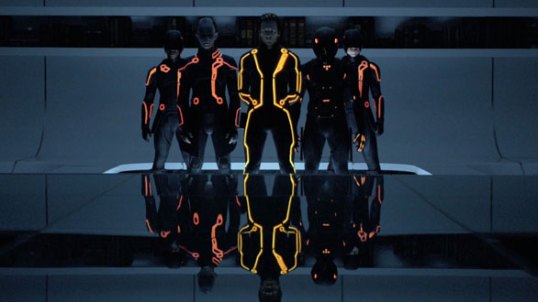
“It all starts with some of the knowledge we garnered from working with Brad Pitt on the Curious Case of Benjamin Button, although that was kind of the reverse approach in that we made Brad Pitt into an 85-year-old man. Here we had to take Jeff Bridges and make him 35.
We created a life cast of Jeff back in July 2008. They put a big plaster mold over him and from that mold they created a clay sculpture, then began to take the years off of that clay sculpture. In this case, we decided to go with an even younger age than we estimated, and then the computer made him younger still, until he was the version of Jeff that ultimately became the Clu character.
We animated with a rig – think of it as a marionette system where you’re able to pull and move that model around. Jeff go in to the studio and we were able to determine how his face moves and applied those back to the younger version. We created a head mounted camera that allowed him to act right there with the other actors with cameras pointed at his face. These would track his facial movements, so we knew what Clu’s face needed to look like using software that reads those live moments that we created earlier and drives the rig.”
Tron suits
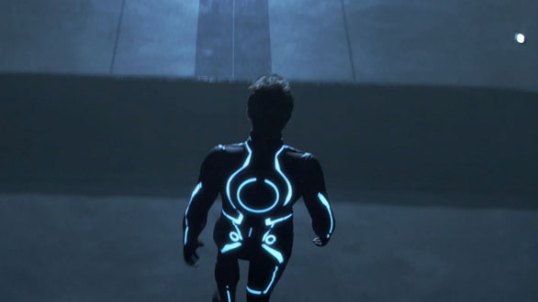
“A company called Quantum built the suits working with the costume designer. The challenge there was creating these costumes that were form fitting and looked great but also lit up. They created these costumes with small light strips and they literally had inverters on their backs, they had batter packs. They were controlled wirelessly and right before we would roll and Joe would yell, “Action!” you’d hear, “Suits on!” and the suits would all light up. Because they had to put in a lot of power into the suits to get them to light up like we needed them to, they would get hot. We’d have to cool them down in between takes. We were constantly swapping out batteries or lamps, it was a lot of work. In between takes they had to use these mini fans on the inverters to cool them down because they sit right there on your back.”
The Grid
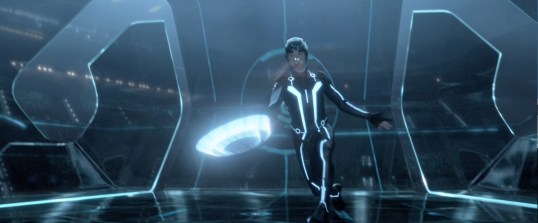
“The original idea that Joe had given the art department was that Kevin Flynn, working with Clu and Tron had built this new world on a server from scratch. The Grid itself is a flat, glass-like surface with a grid pattern on it. We mapped everything out. They had a map of the entire city, which is really beautiful to look at design wise. It inspired all of us. We used their map as an outline and to build the models, but then we also had to make it look like it had aged and grown over the years.
Joe had very specific ideas of how he wanted this one to look. The idea was that this server was set up independently from the other film and the design all stems from Kevin Flynn. The first film had those sensibilities, and then the art department was inspired by the design of the first film. The suits themselves are a huge homage to the original suits.”
Light Jet Dog Fight
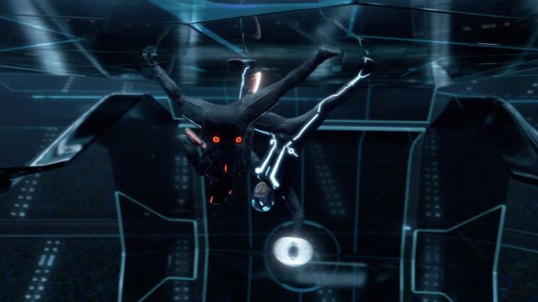
“Like any action sequence, it all starts in the director’s mind. In this case, traditionally, you might start with storyboards, but it’s tricky. We blocked out each sequence for Joe and thought about it and we went over the guidelines and we’d just start piecing the shots together. We’re all inspired by so many movies and so many great space battles that we all just drew from those and tried to make it interesting. There are a few hidden references to Star Wars in that battle.”
Light Cycle Race
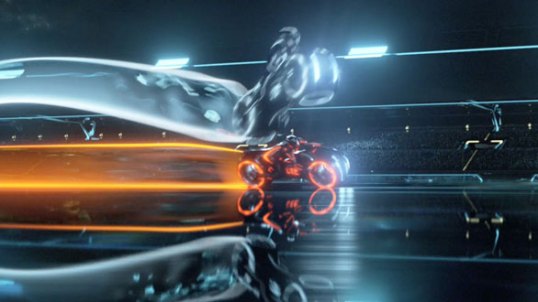
“These were created much like the Light Jet sequence. The cycles themselves were beautiful designs but with motorcycles that big and low to the ground, you could never drive them on the streets here because they are too low to the ground and it’s too hard to turn them. We had a lot of the same issues with blocking them out. It all stems from Joe’s ideas of what he wants to have happened. We have to think of everything. How fast should a light bike go? How about 60 mph? How big should the spacing be on the grid?
We just started adding things to them. How far should they lean over? You have to do all of these little things. It was a lot of fun and collaborative process with the director. There’s a lot of challenges. How do you light a black bike on black glass at night? It was such a complicated, but fun process.”

